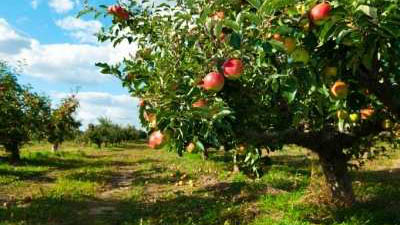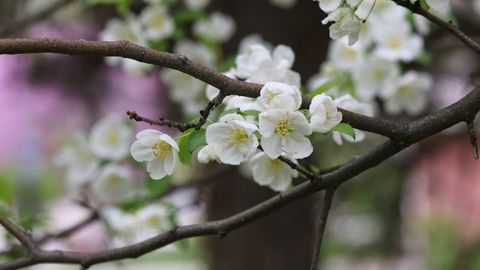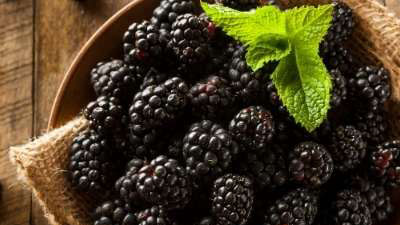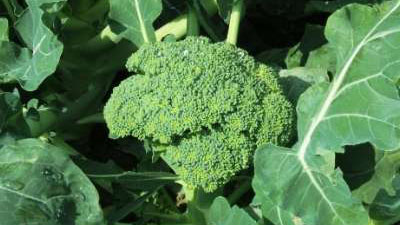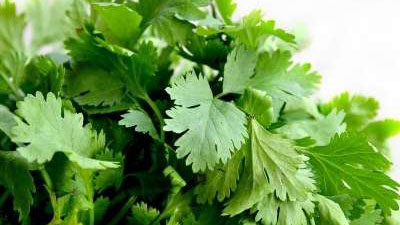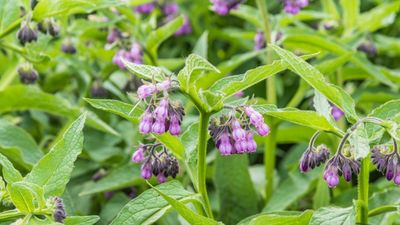How to Grow Wasabi in Your Garden
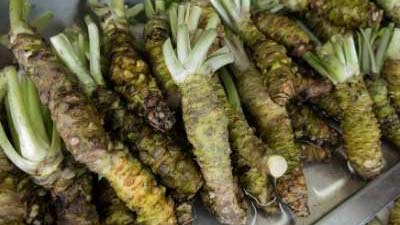
Summary
Wasabia japonica is a challenging plant to grow successfully in Utah due to the hot arid climate combined with freezing winters. It is thought to be one of the rarest and most difficult vegetables to grow in the world. Wasabi requires moist to wet organic rich soils and continuous flowing water. Wasabi grows better in shaded locations and should be supplied regularly with sulfur containing fertilizers. The shaded area should be prepared with a large amount of organic matter. Wasabi grows best when planted in the spring and should be spaced about 12 inches apart. Control weeds and frequently check for slugs and snails. It takes about 2 years before the rhizome matures to full size and flavor.
Recommended Wasabi Varieties
Wasabi varieties Duruma and Mazuma are main varieties in the marketplace. Mazuma tends to be a hotter variety. Wasabia koreana and Wasabia tetsuigi are other species cultivated for their spicy rhizome.
How to Grow Wasabi
Soils
Wasabi grows best in loose, very organic-rich, and moist to wet soil amended to a pH of 6-7. Make sure the roots are completely covered and the soil reaches up to the base of the lowest stems.
Soil Preparation
Before planting, determine fertilizer needs with a soil test and then follow the recommendations given with the test report. If fertilizer applications are warranted, work the fertilizer into the top 6 inches of soil. If you fertilize with compost, apply 2-3 inches of well-composted organic matter per 100 square feet of garden area and till the soil well. Wasabi does best in heavily shaded areas of the garden or near a pond or artificial stream where fresh water is provided.
Plants
Order wasabi rhizomes online as few local garden centers carry the plants. When you receive your wasabi plants, keep them moist and in the refrigerator until you are ready to plant, but do not store for more than 30 days. Before planting, soak roots thoroughly in cool water and remove any damaged leaves.
Planting and Spacing
Plant wasabi in the spring when temperatures stay above 30º F. It is critical to plant wasabi in a shaded area that provides at least 75% shade during the day. A northern exposure out of direct sun is best. The optimal temperature for the whole growing season is 50-60º F. Wasabi is native to areas that have hot, humid summers and dry, cool winters. Wasabi may also be planted in containers that are move inside or outside depending on weather conditions. If planting in a container, use a 6- inch pot filled with organic rich potting mix and then transplant after 1 year to a 12- inch pot. To increase drainage, put sand underneath the media in the pot. Water thoroughly and frequently, but do not let the plant stand in the drainage water. Wasabi plants will grow 8- 18 inches high and should be spaced about 12 inches apart.
Water
Wasabi is a semi-aquatic plant. It grows along streams in heavily wooded areas. For optimal growth, wasabi should be bathed continuously with cool water (45-55º F), year round. Prune back any leaves or stems that remain wilted longer than a few days. Mulch around the plants to help retain soil moisture. One way to achieve this microclimate would be to build a waterfall in a north or northeastern area of the yard. Set it up in such a way that the water, which should be rich with minerals, will continually splash on the plant.
Fertilization
Japanese growers recommend a slow release 12-12-12 fertilizer applied every 3-4 months. Fertilizers high in sulfur will help increase the flavor and spiciness of the wasabi rhizome. Try different fertilizers with varied applications and monitor the growth of the wasabi to identify what works. It is better to under-fertilize than to over-fertilize these plants.
Problems with Growing Wasabi
Weeds
Keep the area surrounding your wasabi plants weed-free if growing in soil. Clean up any dead leaves to prevent infestation of pests.
Pests
| Insects | Identification | Control |
|---|---|---|
| Aphids | Green or black soft-bodied insects that feed on underside of leaves. Leaves become crinkled and curled. | Use insecticidal soaps, appropriate insecticides, or strong water stream to dislodge insects. |
| Snails and Slugs | Soft-bodied or shelled mollusks that chew irregular shaped holes in leaves. | Control with appropriate pesticides or traps. Remove by hand and destroy. |
Diseases
Wasabi is vulnerable to various stem and root fungal and bacterial diseases. In the natural running water systems, there are few effective control methods for these diseases.
How to Harvest and Store Wasabi
Harvest the roots in the spring or autumn when temperatures are cool. It takes about 2 years for the rhizomes to grow to 4-6 inches in length. Pull up the entire plant and remove any side shoots off the rhizome. These shoots are used for replanting the crop. Gently wash off any dirt. Grate the root with a very fine grater and store any unused root in a glass jar in the refrigerator for up to 30 days. Wasabi root may also be dried and ground.
Fall/Winter Plant Care
Wasabi must be protected from cold winter temperatures. In warmer areas of Utah, covering the plants with mulch and/or plastic while continuing the water needs may work. In the colder parts of Utah, move the potted wasabi to a . cool, diffuse lit room. Container grown wasabi will be much simpler to move inside for the winter.
Productivity
Expect a 4-6 inch root per plant every 2 years.
Frequently Asked Questions
Q. What is the wasabi I get from the market or sushi bar made from? The wasabi available to most people is made up of horseradish powder, mustard power, cornstarch, and food coloring. Real fresh or dried wasabi is quite expensive and is considered a Japanese delicacy.
Q. What benefits does wasabi offer? Like most other members of the cruciferous (cabbage) family, wasabi has natural cancer fighting isothiocyanates. In Japan, the chemicals in wasabi are thought to prevent food poisoning by killing dangerous microbes commonly found in raw fish.
Published April 2020
Utah State University Extension
Peer-reviewed fact sheet
Authors
Andrea Clemensen and Dan Drost Vegetable Specialist
Related Research


